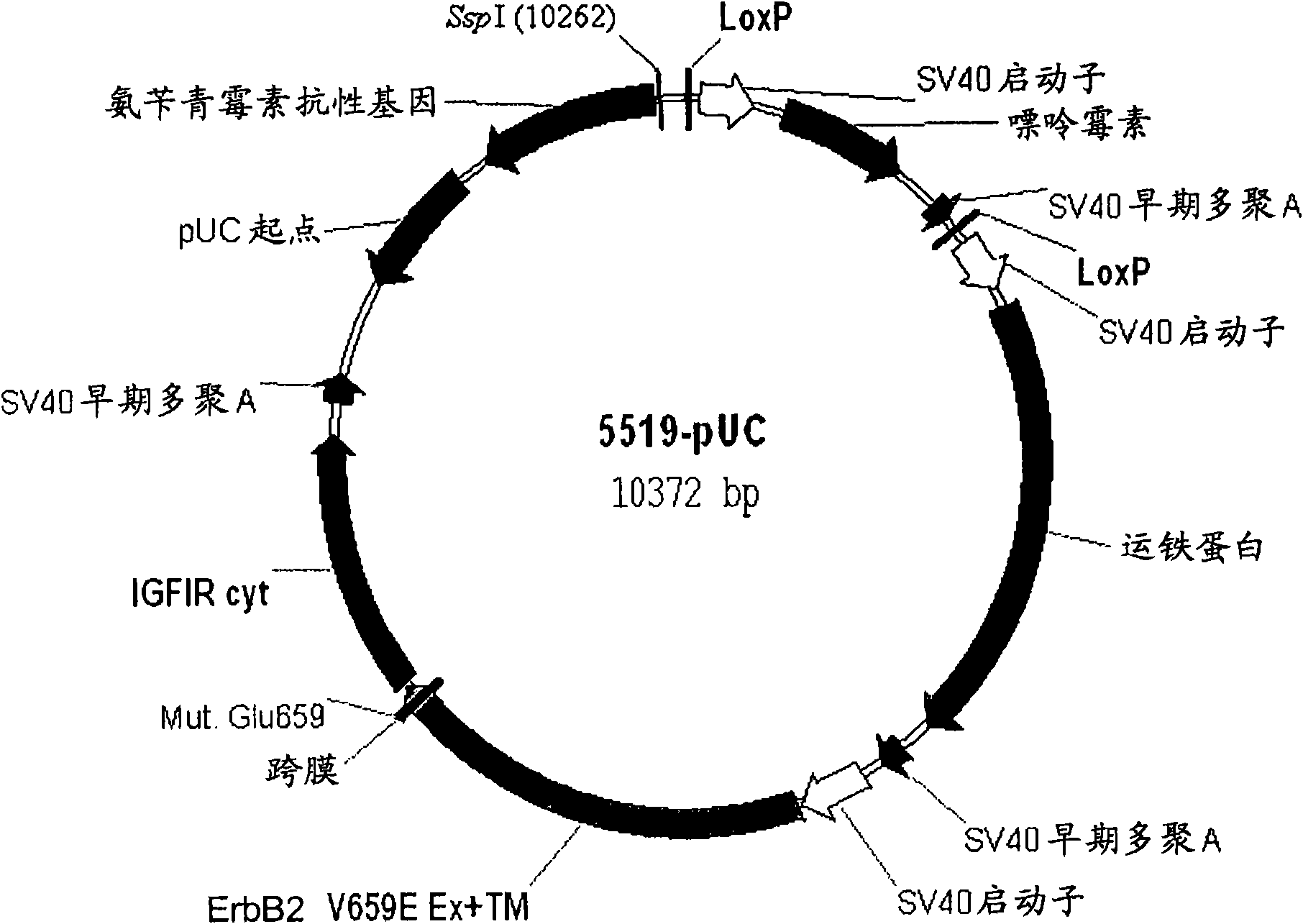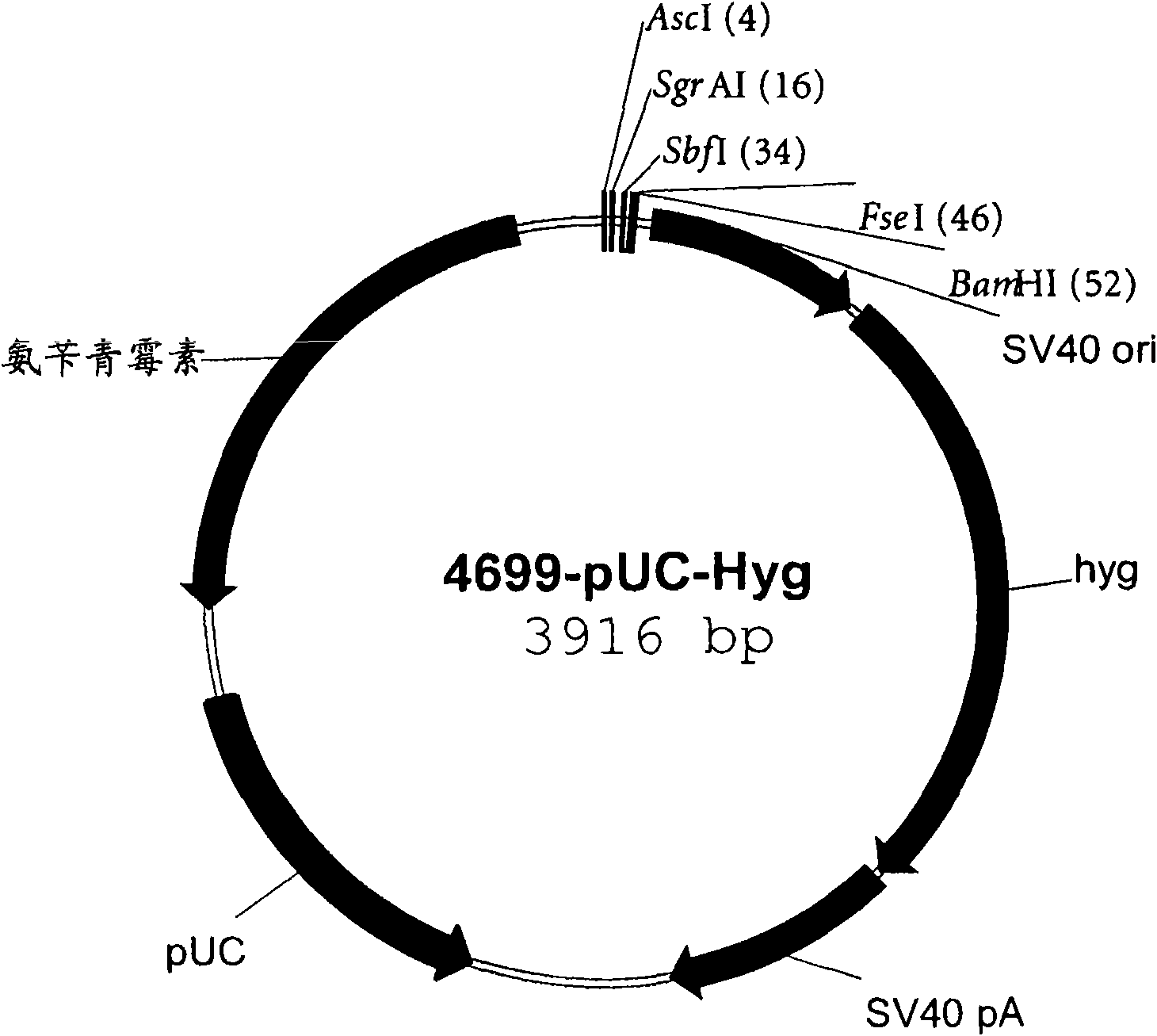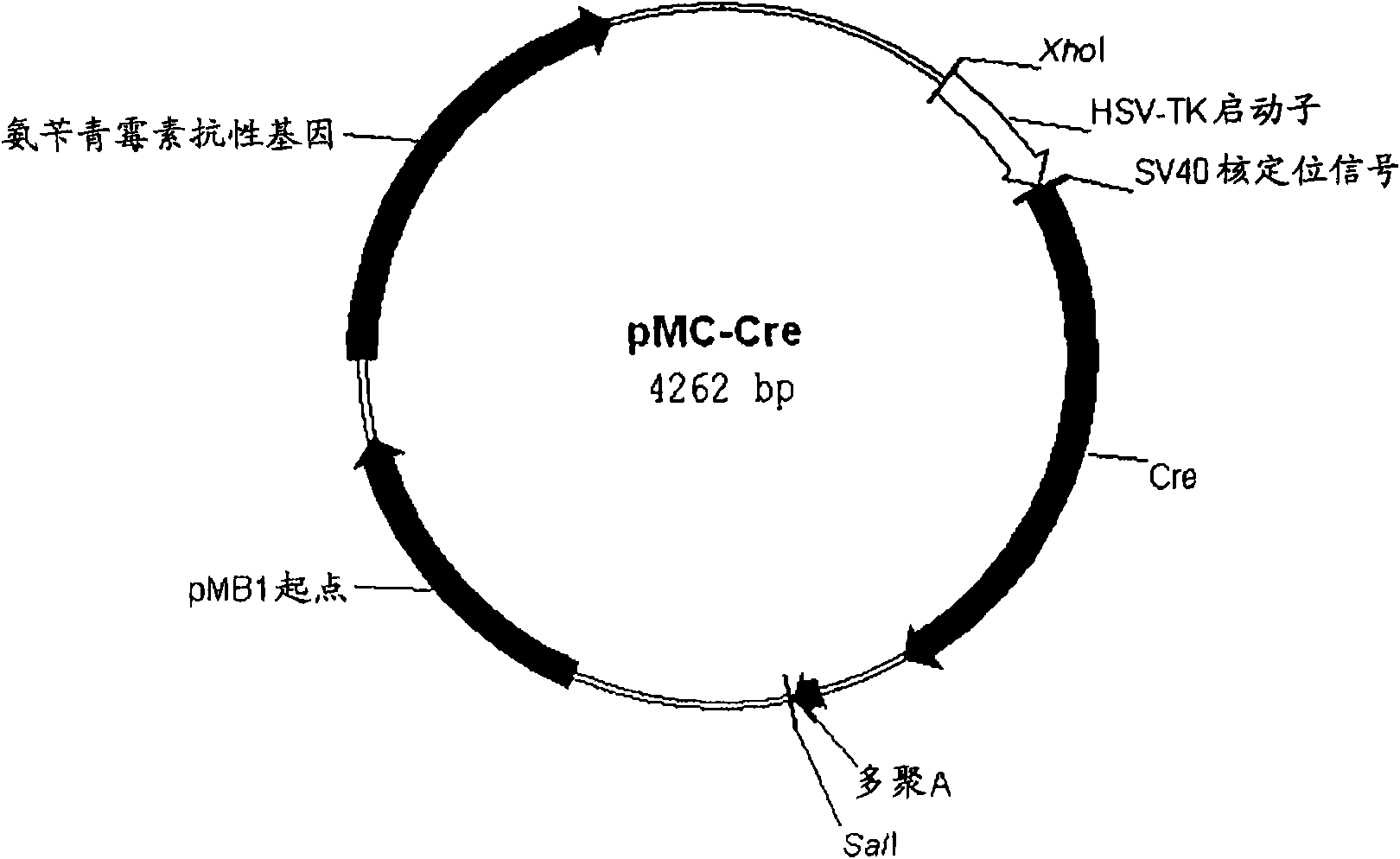CHO cell
A cell and nucleic acid technology, applied in the field of CHO cells, can solve problems such as pollution, high cost, constant product quantity and quality difficulties, etc.
- Summary
- Abstract
- Description
- Claims
- Application Information
AI Technical Summary
Problems solved by technology
Method used
Image
Examples
Embodiment 1
[0085] Generation of plasmid 5519-pUC
[0086] Plasmid 5519-pUC provides for constitutively active mitogenic receptor (chimeric receptor ErbB2 V→E / IGF-IR), an expression cassette for transferrin expression, and an expression cassette for a selectable marker conferring puromycin resistance.
[0087] In detail, plasmid 5519-pUC contains the following elements:
[0088] - A nucleic acid comprising a puromycin selection marker flanked by two loxP sites (SEQ ID NO: 01); hereinafter the nucleic acid is designated puro-loxP.
[0089]- pUC origin of replication for plasmid replication and growth in E. coli,
[0090] - beta-lactamase gene (beta-lactamase gene),
[0091] -comprising the nucleic acid of the cDNA sequence of transferrin structural gene, signal peptide, SV40 early promoter and origin, and transferrin open reading frame (Yang, F., etc., Proc.Natl.Acad.Sci.USA81 (1984) 2752-6) (SEQ ID NO: 02),
[0092] - contains the SV40 early promoter and origin sequence, and encodes...
Embodiment 2
[0101] Transfection of CHO-K1 cells with plasmid 5519-pUC
[0102] To obtain CHO cells with constitutively active mitogenic receptors, CHO-K1 cells were adapted for growth in serum-free medium. The basic CHO-K1 cell line was obtained from the American Type Culture Collection (ATCC CCL-61). Kao, F.T. and Puck, T.T., Proc.Natl.Acad.Sci.USA 60 (1968) 1275-81; Derivation and generation of the K1 cell line.
[0103] The adapted cell line was named CHO-K1(W). This cell line does not contain foreign DNA, such as integrated by transfection methods, and is suitable for growth in suspension culture in synthetic animal component-free ProCHO4 medium (Cambrex Corp., USA). This medium was supplemented with 8 mM glutamine (Gln) and 1 x HT (hypoxanthine-thymidine) supplement and was named ProCHO4 complete medium hereinafter.
[0104] Plasmid 5519-pUC was linearized prior to transfection using a single Sspl restriction site adjacent to the ampicillin selectable marker (gene). CHO-K1 (W) c...
Embodiment 3
[0106] Generation of cell line CHO-K1-5519-1B6
[0107] The transfected cells of Example 2 were cultured in ProCHO4 complete selection medium for 2-4 weeks. To obtain stably transfected cell clones, a two-step selection step was performed.
[0108] a) First selection step:
[0109] Clones were picked for propagation using two different criteria:
[0110] visual choice
[0111] Visually distinct colonies were transfected into 24-well multiwell plates (non-tissue culture treated; Becton Dickinson, surface area: 2.0 cm 2 ).
[0112] Cell Proliferation Assay
[0113] The WST-I cell proliferation assay (Roche Diagnostics GmbH, Germany) was performed according to growth parameters for selection of additional clones. The clone with the highest absorbance was selected and transferred to a 24-well multiwell plate.
[0114] Cell proliferation and clonal viability were determined using the WST-I colorimetric assay. Determination of formazan based on cell metabolic activity and ac...
PUM
 Login to View More
Login to View More Abstract
Description
Claims
Application Information
 Login to View More
Login to View More - R&D
- Intellectual Property
- Life Sciences
- Materials
- Tech Scout
- Unparalleled Data Quality
- Higher Quality Content
- 60% Fewer Hallucinations
Browse by: Latest US Patents, China's latest patents, Technical Efficacy Thesaurus, Application Domain, Technology Topic, Popular Technical Reports.
© 2025 PatSnap. All rights reserved.Legal|Privacy policy|Modern Slavery Act Transparency Statement|Sitemap|About US| Contact US: help@patsnap.com



